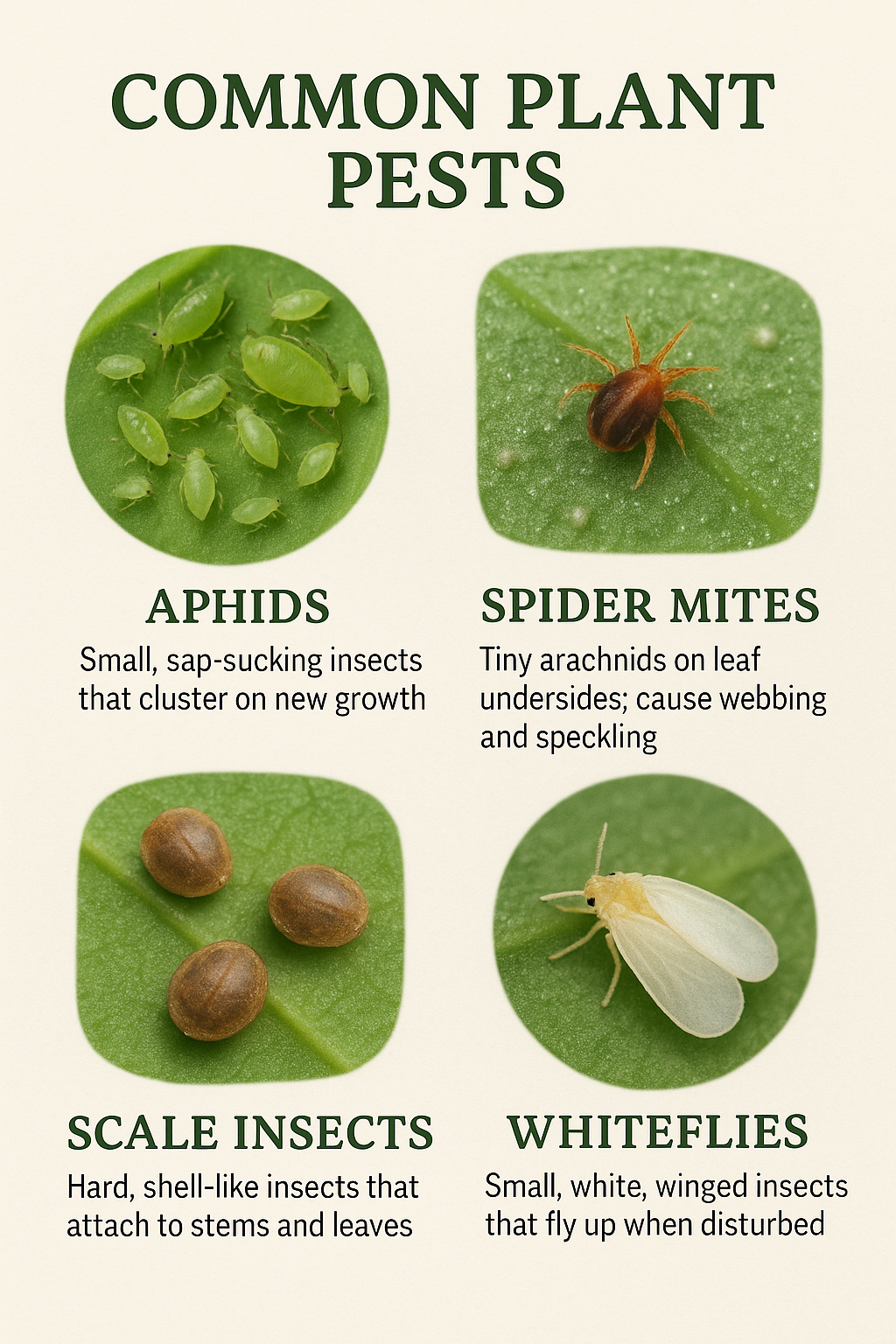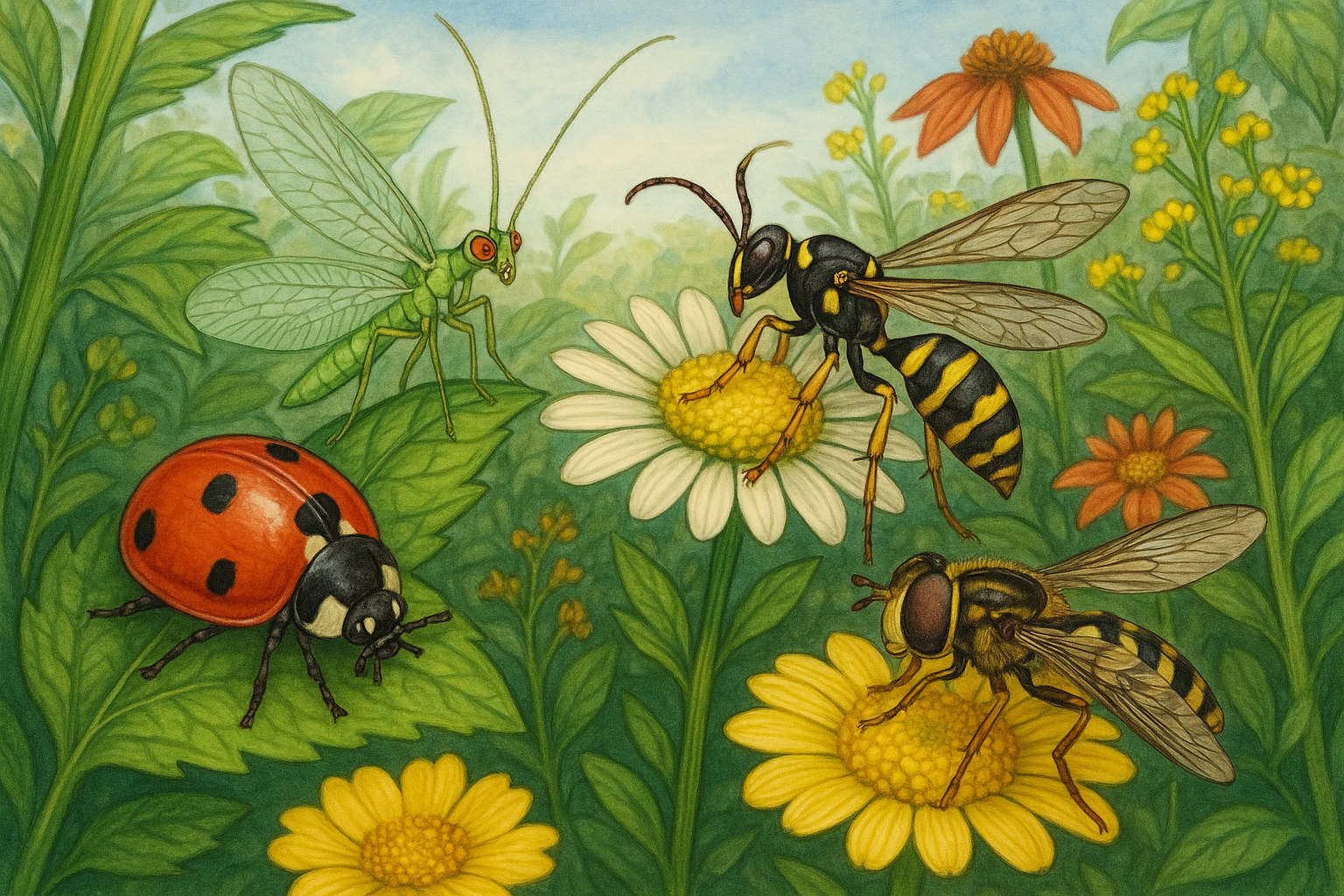Complete Guide to Plant Pest Treatment and Control
Effective pest management is essential for maintaining healthy plants and achieving successful harvests. This comprehensive guide covers identification, treatment mechanisms, and proven control strategies for common plant pests.
Understanding Plant Pests and Damage Types
Plant pests cause damage through different feeding mechanisms. Chewing insects like caterpillars and beetles create visible holes and tears in leaves with their strong mandibles. Piercing-sucking insects such as aphids, spider mites, and scale insects use straw-like mouthparts to extract plant sap, causing symptoms including leaf stippling, yellowing, curling, and wilting.
Common signs of pest infestations include wilting plant tissues, stunting, curling or distortion of new growth, chlorotic spots on leaf surfaces, sticky honeydew substance, or black fungal growth on upper leaf surfaces.
Integrated Pest Management (IPM) Approach
The most effective pest control strategy follows Integrated Pest Management principles, which emphasize long-term prevention through a combination of techniques. IPM focuses on:
-
Prevention first - Remove conditions that allow pests to thrive
-
Monitoring and identification - Regular inspection to detect problems early
-
Setting action thresholds - Determine when intervention is necessary
-
Multiple control methods - Combine biological, cultural, and chemical approaches
This approach provides more effective, environmentally sensitive pest].
Common Plant Pests and Treatment Methods
Aphids
Identification: Small (1/4 inch), soft-bodied insects in colors ranging from green to yellow, black, brown, or white. They reproduce rapidly without males, allowing dozens of generations per growing season.
Treatment Methods:
-
Water spray: Use strong water spray to dislodge isolated aphid concentrations
-
Insecticidal soap: Apply diluted soap solution (2% concentration) for contact control
-
Neem oil: Mix 1-2 tablespoons per gallon of water for systemic control
-
Beneficial insects: Encourage ladybugs, lacewings, and parasitic wasps
Spider Mites
Identification: Tiny arachnids (1/50 inch) that appear as moving specks on white paper when leaves are shaken. They cause browning, speckled appearance on leaves.
Treatment Methods:
-
Water pressure: Isolate plant and spray leaves and stems thoroughly
-
Multiple treatments: Spray at least three times at 3-day intervals to break lifecycle
-
Miticides: Use potassium-based insecticidal soaps and pyrethrin sprays
-
Environmental control: Maintain proper watering to prevent drought stress
Scale Insects
Identification: Hard-shelled insects that attach to twigs and needles, appearing as small bumps. They inject toxins while feeding on plant sap.
Treatment Methods:
-
Alcohol treatment: 10% water and alcohol mix with neem oil and dish soap
-
Systemic insecticides: Applied during crawler stage when shells aren't fully formed
-
Horticultural oils: Suffocate insects by coating their shells
Whiteflies
Neem Oil
Neem oil is one of the most versatile organic pest control tools, extracted from seeds of the Indian Neem Tree (Azadirachta indica).
How it works:
-
Contact killer: Kills soft-bodied insects like aphids, mealybugs, mites, thrips, and whiteflies on contact
-
Anti-feedant: Deters insects from feeding when they contact or ingest it
-
Hormone disruptor: Interferes with insect growth and reproduction cycles
Application: Mix 1-2 tablespoons per gallon of water with biodegradable dish soap. Apply every 7-10 days, avoiding direct sunlight and pollinator activity periods.
Diatomaceous Earth (DE)
Diatomaceous earth is a natural powder made from fossilized diatoms that provides mechanical pest control.
How it works: Sharp microscopic edges cut insect exoskeletons, causing dehydration and death. Effective against ants, aphids, mites, fungus gnats, and other soft-bodied pests.
Application:
-
Lightly sprinkle food-grade DE around plant bases
-
Can be applied to leaves for direct contact with feeding pests
-
Reapply after watering or rain
Insecticidal Soaps
Soaps disrupt insect cell membranes and remove protective waxes, causing death through water loss.
Most effective against: Small, soft-bodied arthropods like aphids, mealybugs, psyllids, and spider mites.
Application: Mix soap to 2% concentration with water. Apply as direct contact spray with thorough coverage.
Biological Control Methods
Beneficial Insects
Cultural Controls
Sanitation practices:
Environmental modifications:
Fungal Disease Prevention and Treatment
Timing and Frequency
Successful plant pest control requires combining multiple strategies:
-
Start with prevention: Select resistant plant varieties, maintain plant health, and create unfavorable conditions for pests
-
Monitor regularly: Inspect plants weekly for early pest detection
-
Use targeted treatments: Apply specific controls based on pest identification
-
Encourage beneficial organisms: Plant diverse flowering species and minimize broad-spectrum pesticide use
-
Maintain consistency: Follow regular treatment schedules during growing season
By implementing these integrated approaches, gardeners can effectively manage plant pests while minimizing environmental impact and promoting ecosystem health. The key to success lies in understanding pest biology, using appropriate treatment methods, and maintaining consistent preventive practices throughout the growing season.
Sources: This guide is compiled from extensive research including university extension publications, peer-reviewed studies, and expert recommendations from integrated pest management specialists. All treatment recommendations follow organic and sustainable gardening principles approved by major agricultural institutions.




